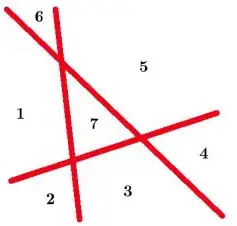From this answer, we know that $n$ planes will partition $\mathbb{R}^m$ into a maximum of $N_{m,n} = \sum_{k = 0}^{m} \binom{n}{k}$ regions. Now we ask the reverse: given any $N_{m,n}$ points in general position in $\mathbb{R}^m$ do there always exist $n$ hyperplanes that will separate these points?
E.g. with $N_{2,3} = 7$ points in $\mathbb{R}^2$, the hypothesis is that there always exist $n = 3$ lines that completely separate any $7$ points.
